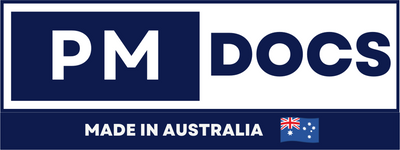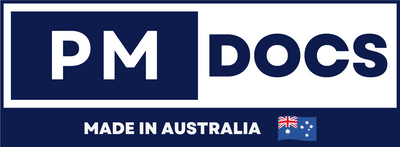How ISO 42001 And AI Governance Work Together?
Introduction
In today's rapidly evolving technological landscape, the integration of standards like ISO 42001 with AI governance is becoming essential. As businesses increasingly adopt artificial intelligence (AI) technologies, the need for structured governance and risk management becomes clear. This article explores how ISO 42001 and AI governance work in harmony to ensure safe and effective AI deployment. The convergence of these frameworks offers a roadmap for businesses to navigate the complex challenges posed by AI while maximizing its benefits.

Key Components Of ISO 42001
ISO 42001 emphasizes the importance of a systematic approach to risk management. This involves:
-
Risk Identification: Recognizing potential risks that could affect the AI system. This step is crucial as it sets the foundation for all subsequent actions, ensuring that no potential threat is overlooked.
-
Risk Analysis and Evaluation: Assessing the likelihood and impact of identified risks. This component requires a deep dive into the nuances of each risk, enabling organizations to prioritize their responses effectively.
-
Risk Treatment: Implementing strategies to mitigate or eliminate risks. This involves deploying specific measures tailored to each risk, ensuring that mitigation efforts are both targeted and effective.
-
Monitoring and Review: Continuously monitoring the AI system and reviewing the risk management process. Regular reviews ensure that risk management strategies evolve in tandem with technological advancements and emerging threats.
By focusing on these components, ISO 42001 provides a holistic risk management approach that integrates seamlessly with AI governance. Organizations can leverage these standards to build robust systems that not only comply with regulations but also enhance operational efficiency.
What Is AI Governance?
AI governance refers to the processes and policies that guide the development and deployment of AI technologies. It ensures that AI systems are used responsibly and ethically, addressing issues like bias, transparency, and accountability. As AI becomes more pervasive, governance frameworks become indispensable tools for mitigating risks and ensuring ethical compliance.
The Role Of AI Governance In Risk Management
AI governance plays a critical role in managing risks associated with AI. It involves setting up frameworks to ensure AI systems are developed and used in a way that aligns with ethical standards and legal requirements. This includes:
-
Bias Mitigation: Ensuring AI systems do not perpetuate existing biases. Addressing bias is essential for maintaining the fairness and credibility of AI technologies, preventing discriminatory outcomes.
-
Transparency: Making AI decision-making processes clear and understandable. Transparency builds trust among users and stakeholders, providing insights into how AI systems function and make decisions.
-
Accountability: Establishing clear lines of responsibility for AI systems. Accountability frameworks ensure that there is a defined structure for addressing issues and implementing improvements.
By focusing on these key areas, AI governance frameworks help organizations navigate the complex ethical and legal landscape associated with AI. They provide the necessary checks and balances to ensure that AI innovations contribute positively to society.
Integrating ISO 42001 With AI Governance
The integration of ISO 42001 with AI governance provides a comprehensive approach to managing AI risks. Here's how they work together:
1. Aligning Objectives
Both ISO 42001 and AI governance aim to ensure that AI technologies are safe, reliable, and ethical. By aligning their objectives, organizations can create a cohesive strategy that addresses all aspects of AI risk management. This alignment ensures that both risk management and ethical considerations are seamlessly integrated into AI deployments.
2. Establishing a Framework
ISO 42001 provides a structured framework for risk management, which can be complemented by AI governance policies. Together, they offer a comprehensive approach to identifying, assessing, and mitigating AI-related risks. This integration ensures that risk management strategies are holistic, covering both technical and ethical dimensions.
3. Continuous Improvement
Both ISO 42001 and AI governance emphasize the importance of continuous monitoring and improvement. By integrating these processes, organizations can ensure their AI systems remain effective and compliant over time. Continuous improvement fosters a culture of innovation, ensuring that AI systems evolve in response to new challenges and opportunities.
Continuous improvement is not just about maintaining compliance; it's about driving growth and innovation. By regularly reviewing and refining risk management and governance strategies, organizations can adapt to the ever-changing AI landscape. This proactive approach ensures that AI systems remain cutting-edge and aligned with the latest ethical standards and regulatory requirements.
How To Implement ISO 42001 With AI Governance Tools
Implementing ISO 42001 with AI governance tools involves several key steps:
Step 1: Conduct a Risk Assessment
Begin by conducting a thorough risk assessment of your AI systems. Identify potential risks and evaluate their likelihood and impact. This will help you prioritize risk mitigation efforts. Risk assessments are foundational, providing the insights needed to tailor strategies to specific organizational contexts.
A comprehensive risk assessment involves collaboration across departments, ensuring that all perspectives are considered. By engaging diverse stakeholders, organizations can uncover hidden risks and develop more effective mitigation strategies. This inclusive approach enhances the robustness of risk assessments, paving the way for successful AI governance implementation.
Step 2: Develop Policies and Procedures
Develop clear policies and procedures for AI governance. This should include guidelines for ethical AI use, data privacy, and security. Ensure these policies align with ISO 42001 standards. Clear policies provide a roadmap for responsible AI deployment, ensuring consistency and compliance.
Policies and procedures must be dynamic, evolving in response to technological advancements and regulatory changes. Regular updates ensure that governance frameworks remain relevant and effective. By fostering a culture of agility, organizations can swiftly adapt to new challenges, maintaining their competitive advantage in the AI space.
Step 3: Implement Risk Mitigation Strategies
Use the insights from your risk assessment to develop and implement risk mitigation strategies. This may involve using AI governance tools to monitor and manage risks in real-time. Effective risk mitigation strategies are proactive, addressing potential threats before they materialize.
Real-time monitoring tools are invaluable, providing continuous insights into AI system performance and potential vulnerabilities. By leveraging these tools, organizations can swiftly identify and address issues, minimizing disruptions and maintaining system integrity. This proactive approach is essential for sustaining trust and confidence in AI technologies.
Step 4: Monitor and Review
Continuously monitor your AI systems and review your risk management processes. Use AI governance tools to track performance and identify areas for improvement. Monitoring and review are ongoing processes, ensuring that AI systems remain effective and compliant.
Regular reviews provide opportunities for learning and growth, enabling organizations to refine their strategies and enhance their AI capabilities. By fostering a culture of continuous improvement, organizations can stay ahead of the curve, ensuring their AI systems are not only compliant but also cutting-edge. This commitment to excellence is key to sustained success in the AI domain.
Real-World Examples
Many organizations are successfully integrating ISO 42001 and AI governance. For instance, tech companies are using these frameworks to manage risks associated with AI-powered products and services. By aligning their risk management strategies with international standards, these companies are able to ensure their AI technologies are safe, reliable, and ethical.
One notable example is the financial sector, where firms are using ISO 42001 and AI governance to manage the complexities of AI-driven trading algorithms. By implementing these standards, they ensure that their systems are transparent and free from bias, enhancing trust among clients and regulators. This proactive approach has not only mitigated risks but also positioned these firms as leaders in ethical AI deployment.
Conclusion
The integration of ISO 42001 with AI governance provides a robust framework for managing AI risks. By adopting these standards and practices, organizations can ensure their AI systems are not only effective but also ethical and compliant. As AI continues to evolve, the importance of structured governance and risk management will only grow. By staying ahead of the curve, organizations can harness the full potential of AI while minimizing risks.




